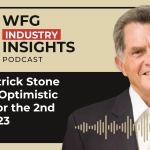
The February employment report fell solidly and impressively in the “better” column, as employers added 295,000 workers to their payrolls. The strong performance beat both more conservative estimates and the January jobs total, which was revised downward. It also marked the 12th consecutive month in which payrolls increased by 200,000 or more. The unemployment rate, which had ticked up in January, ticked down again, falling from 5.7 percent to 5.5 percent.
Wage growth, the critical missing ingredient in the economic recovery, continued to disappoint, however, with earnings increasing by a scant 0.1 percent. Analysts concerned that anemic wage growth will short-circuit the housing recovery and undermine economic growth became more concerned.
But some economists see evidence of underlying strength not yet reflected in the earnings data. Among them is Mark Zandi, chief economist for Moody’s.com, who thinks demographics rather than structural weakness explains the slow growth in wages. He points specifically to the shift resulting as retiring baby boomers, at the top of the earnings scale, are replaced by younger workers several rungs below them.
Zandi also sees indications that the wage freeze is beginning to thaw. For one thing, he notes, turnover is increasing – a sign that workers are optimistic about their ability to find new jobs; and employers are beginning to feel pressure to increase wages in order to hold on to workers. Walmart and TJMax recently announced increases in their minimum wage and other companies are expected to follow, Zandi and other similarly optimistic analysts are predicting.




